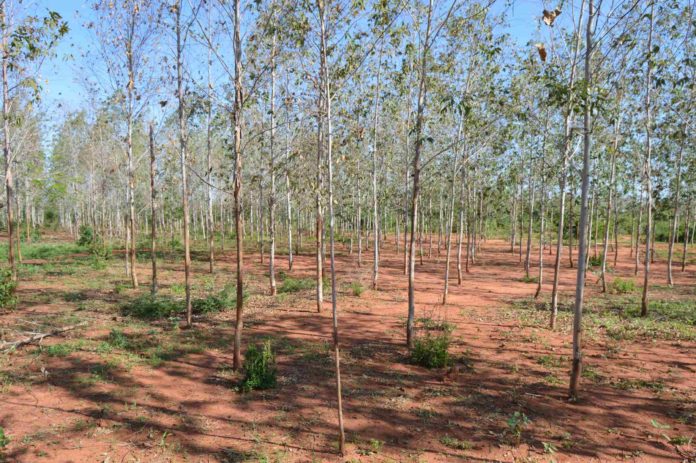ISLAMABAD (ABC) – Forestation at the right-time with the right species is necessary to help decrease environmental impacts and keep the tempratures from rising, experts suggested.
“Chopping down trees at the maturity stage and replacing them with fresh plantations can help reduce the chances of temperature increases,” said Muhammad Yousaf, Chief Forest Conservator in Northern Region.
Talking to WealthPK, he said forests were the collectors of carbon dioxide (CO₂) and other greenhouse gases (GHG).
“Trees vary in the CO₂ storage capacity. In 1700, before industrialisation, there was no concept of global warming.
The use of coal, oil and gas (hydrocarbons) was not known. All these forms of carbon were isolated underground.
However, industrialisation increased the energy demand and the hidden carbon was brought to the surface in the form of coal and other hydrocarbons.
Carbon released through burning them started to warm the globe.”
Yousaf said it was necessary to cut the mature trees in time and replant them equally.
“Without cutting the mature trees, an increase in plantation will only bring calamity in different forms like water scarcity and heat generation due to CO₂ release.”
The conservator explained that the occurrence of nitrogen, oxygen, argon and carbon dioxide gases in the atmosphere was 78%, 20.98%, 0.93, and 0.4%, respectively.
Water vapors and a few other gases in miner quantities are also part of the atmosphere. The ratio of carbon dioxide in the air was ideal before 1700 as it was 280 particles per million (ppm).
In 1990 it increased to 380ppm, in 2016 it was 410ppm, and now it is about 420ppm. Human beings cannot bear carbon dioxide more than 500ppm. But still, at this level, it makes human brain unconscious.
The same is with plantations. Plants grow ideally at 380ppm but their growth also stops after 500ppm.
From the year 1700 to date, coal, petroleum and gas consumption has increased and their carbon emissions per annum are up to 12 billion tonnes.
Yousaf said that tree plantations were necessary where trees were scarce due to non-plantation or any other man-made reason.
“However, plantation in tree-laden areas is only disastrous as it causes forest fires due to increased heat and lowers the underground water table. For example, no visible water spring can be traced in pine forests.
They are evergreen and consume great quantities of water. So, except for its natural habitat, its excessive plantation in other places will harm the environment.
Another example is that there is too much heat in the corn and rice fields.”
He said that even the heat created by forests, especially when they are located near the riverbanks, causes floods or increases water flow.
“In dense forested areas, heat generated during photosynthesis is just like heat created through emissions from a factory.
So, an extensive awareness programme is required in Pakistan to sensitise people to this important issue.”
Talking to WealthPK, Muhammad Aatif, Deputy Director of Peshawar Forest Institute, said, “Tree plantation at the right time and the right place according to natural environment and needs no doubt brings socioeconomic and ecological benefits.
“Forests act as tree banks. They have a multi-pronged role in climate change. When forests are conserved and protected against deforestation and degradation, the carbon stored in the forest ecosystem is prevented from releasing into the atmosphere and thus emissions are reduced.
Similarly, when new forests are developed through plantation or restoration, this helps in carbon sequestration.
The use of wood products instead of emissions-intensive products such as steel helps in emission reduction. Forests also serve as a source of emissions when they are deforested or degraded.
It is also worth mentioning that native ecosystems such as deserts, if converted into plantations, may result in negative environmental impacts e.g. rise in temperature and loss of biodiversity.”

